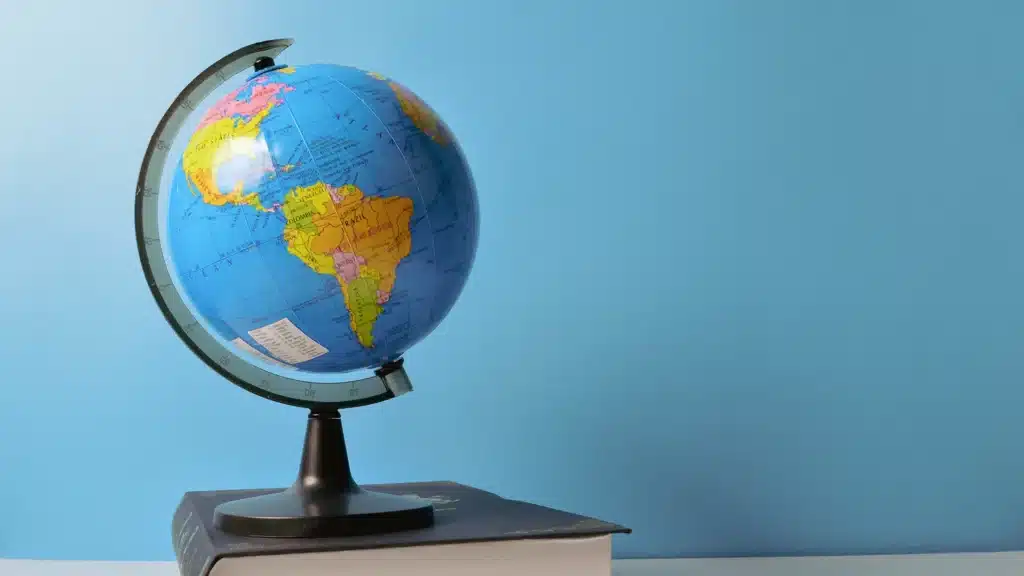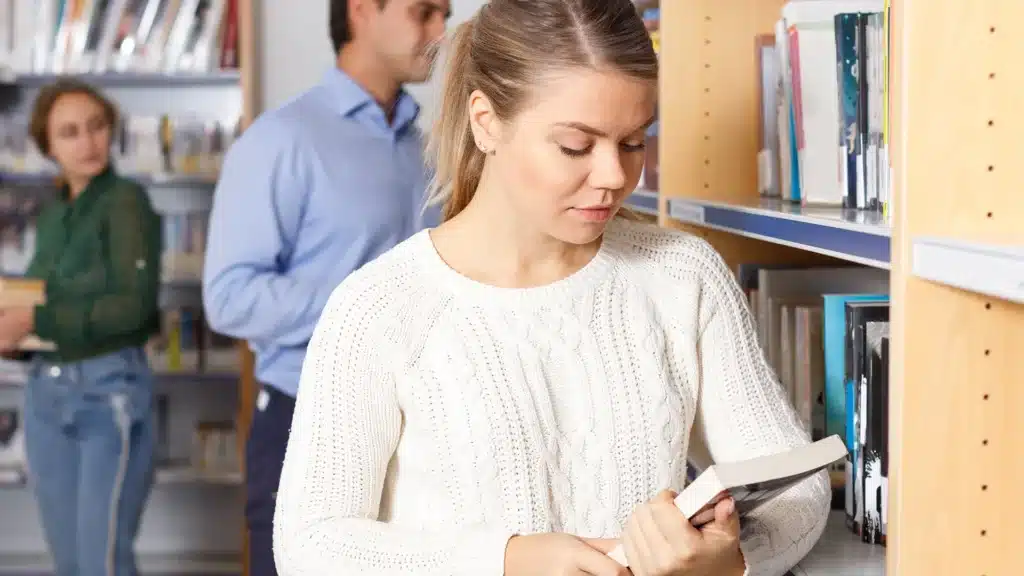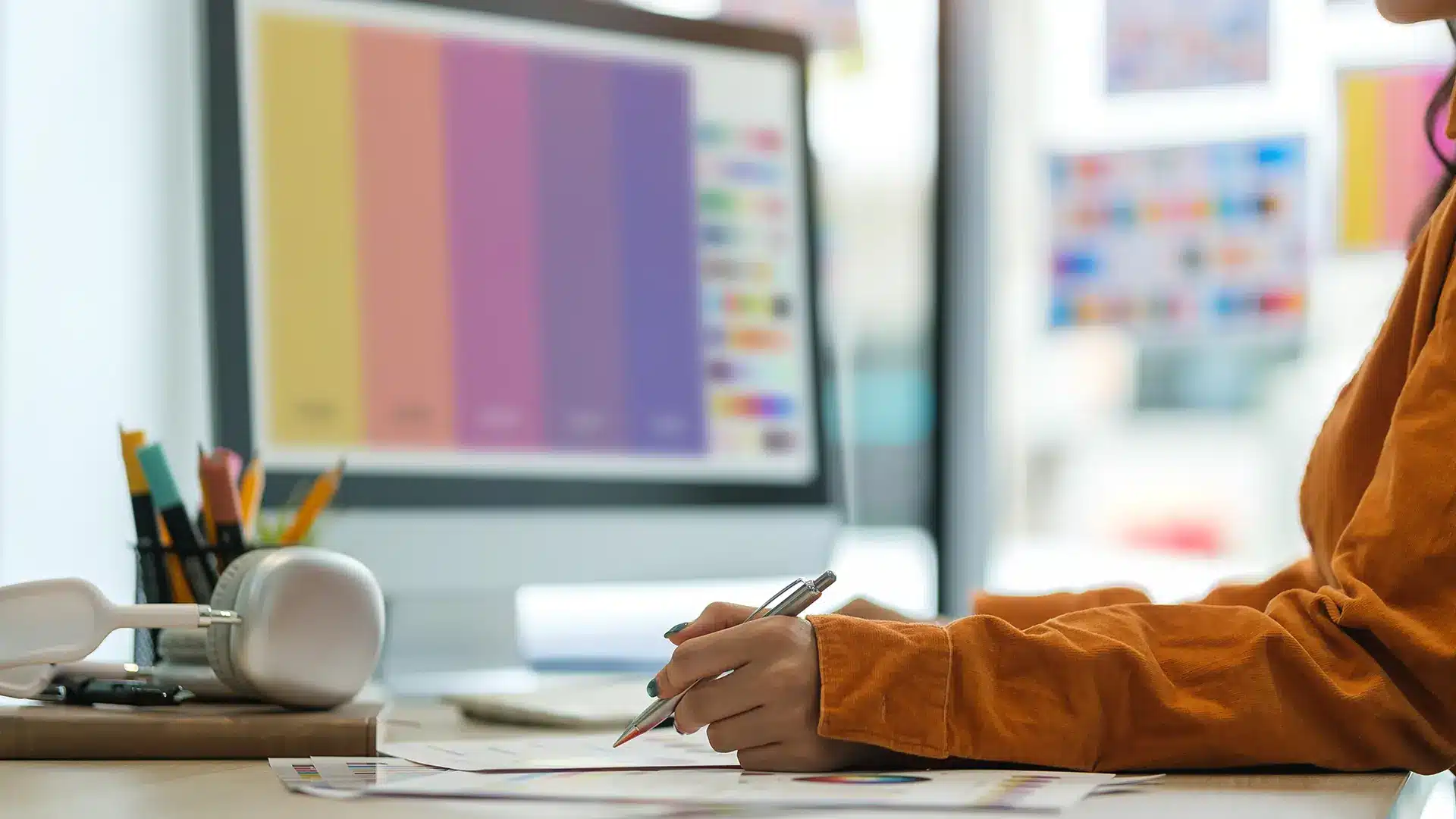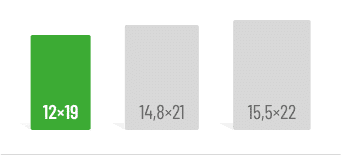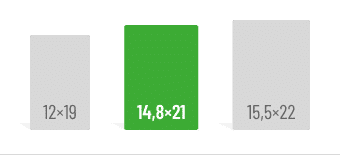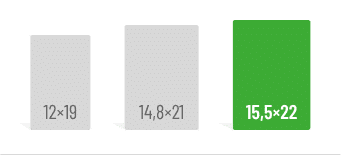First things first:
- Studying in the library creates physical distance from your personal life.
- Studying at home allows you to work according to your own preferences.
Silence as the ultimate asset
Libraries are known for their quietness, often maintained by bans on phone calls and eating. This creates a general atmosphere of focus and productivity, which can be helpful when studying or writing—you’re essentially surrounded by like-minded individuals. However, absolute silence is never guaranteed, as people will cough, flip through books, or rummage in bags. If this bothers you, you can listen to music with headphones or use earplugs, which some libraries even provide in vending machines. Still, many students prefer the comfort of their own space, where they can relax, maybe with a cup of tea. A perk of studying at home is that you don’t have to worry about appearances and can spend the entire day in your sweatpants if you like. You also save the time it would take to travel to the library, which can sometimes be longer than expected if you’re using public transport, cutting into valuable study time.
The risk of procrastination
Most people have procrastinated at some point, whether due to writer’s block or a lack of motivation. In the library, you can avoid this trap by leaving your phone in a locker and only bringing the essentials for your work. It’s important to be honest with yourself here! Check out our article about procrastination for more advice.
Keep in mind, though, that breaks are just as important for the brain as periods of intense focus. A ten-minute break every 90 minutes is recommended, but you’ll often have to spend these breaks quietly in your library seat. At home, you can take a walk, do some exercises, or empty the dishwasher to switch things up. Just be sure to return to your desk on time.
A wealth of knowledge
When planning a research paper, a visit to the library is essential to get a feel for the topic and an overview of available resources. If you’re dealing with writer’s block, you can browse other books that you hadn’t considered before, offering you a fresh perspective and renewed inspiration. At home, you’re limited to the books you’ve borrowed or what’s available online. But this can actually help you dive deeper into the resources at hand, instead of quickly moving on if something doesn’t immediately fit. And if you prefer working with physical books rather than digital sources, you’ll always have your notes on hand, without the risk of realizing too late that an important handout is still back home on your desk.
Work-life balance during studies
Many university libraries meet the needs of their users and, for example, stay open longer during exam periods. However, this means you’ll have to arrive early to secure a seat, as demand is high. If you’re not a morning person, you might not be mentally ready to perform at your best at that time. Similarly, if you think better at night, the library hours might not work for you. In these cases, studying primarily from home could be a good option.
Pay particular attention to your work-life balance: as we saw during the COVID-19 pandemic, both students and professionals struggled with separating relaxation from productivity when using the same space. To counter this, designate your desk as your main workspace and avoid studying in bed or other relaxation spots. Regardless of location, a study or writing schedule that lays out what needs to be done and when is immensely helpful. As always, organization is key.
Conclusion
Ultimately, there’s no universal answer to the question of which environment is the most productive. It depends on factors like your daily energy levels, mood, motivation, and personal learning and writing preferences. To understand yourself better, I recommend our article on the four learning types according to Vester. It’s worth experimenting since variety can help combat monotony and the boredom that comes with it. Best of luck with your studies!
Do you like our magazine? Then sign up for our GRIN newsletter now!

